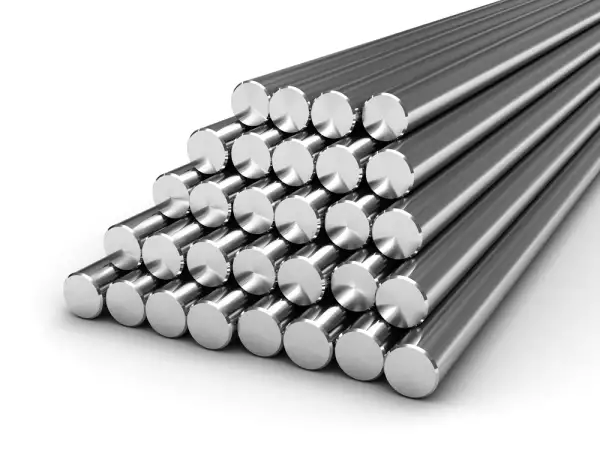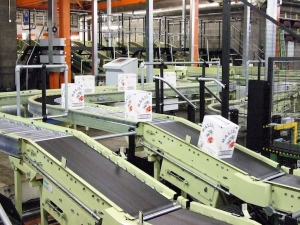
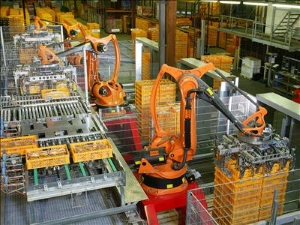
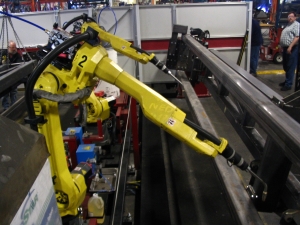
Existing ground circuit of computer and automation equipment can be subdivided into:
- Protecting grounding circuits (PG).
- System grounding circuits (SG).
1.Protective grounding
The indicated type of grounding protects people from possible isolation damage of the working electrical installation. It is required to perform grounding (neutrallizing) of the existing electric installations of objects relating to APCS on:
- metal cases of the following devices: control and measuring devices, control switches, CD (control devices), lighting units, alarms and security elements, electric valves, etc., AS of electric motors (actuating systems);
- metal panels, and shields of any purpose, if electrical appliances, devices, and other resources relating to the elements of computer technology and automation are mounted on them. Herein the indicated requirement reaches the opening and / or removable parts of the mentioned panels and boards in cases when any equipment with voltages above 42V for (~) or 110V for const current, are placed on them, as well as metal support structures, the purpose of which is to mount AC and power consumers on them;
- couplers and cable armor of both power and control cables, their shells, made of metal; similar shells and metal hoses of conductors (wires and / or cables); electrical wiring pipes made of steel or other electrical elements made of metal;
- conductors' shells made of metal, as well as cable armor that compose chains, «U» in which does not exceed values of 42B for (~) or 110V for const current, which are arranged on a unitary structure made of metal, with the conductors, the structure elements of which, made of metal, should be grounded or neutralized.
Some conductors for grounding are not required to be used in the following elements of circuits:
- tools and devices used for the automation, which are mounted on the already grounded metalwork, if there is a stable electric contact between their bodies and the indicated designs;
- removable and the opening parts of fences, pancels, etc. in cases where applicances with the voltage not more than 42V for (~) const or 110B on current are mounted on them; · Power consumers shells, which are connected to the circuit through a special dividing transformers or double insulated. It is forbidden to connect such consumers to the grounding system.
According to the requirements of the EIC (p.1.7.70) the following can perform the role of neutral conductor in the studied electric installation (grounding):
- Trays made of metal and also metal boxes;
- cable sheath made of Al;
- metal pipes protecting electric wiring;
- conductors used for such purposes, like copper or steel tapes, etc .;
- for the indicated purposes "0" working conductors are used for TN systems, except when it comes to branches going to single-phase power consumers. Neutralizaton of the latter is performed by zero (third) protective conductor.
Grounding elements
All connections of grounding conductors can only be carried out by welding, soldering, bolting, with the use of special flags and cable ties.
In cases of connection to protective ground conductor assemblies made of non-ferrous metals, they need to have special tips and flexible copper bridges should have tips on both sides.
When using connections with bolts, it is necessary to use spring washers ( lock washers as an option).
Types of protective grounding of APCS
Such products as electrical receivers, consoles and panels are equipped with ground units, to which the protective conductor is directly connected, and the supporting frames, which have multi-sectional panels, are connected with flat steel passing through ground nodes of all frames. In cases, when it comes to grounding of power consumers, subject to vibrations, flexible copper bridge should be used.
Grounding of technical equipment
It is used to begin protective grounding of APCS with the main line that is connected to the ground electrode existing in the system of the objects' power supply. Main lines of protective grounding (as computer equipment andautomation systems) are connected to the protective grounding at a single point, which should be located as close as possible to the very ground electrode. The main ine of protecting grounding of APCS is connected to a zero wire TN-C (TN-C-S, TN-S) in a united neutralizing node. This node is located on computer equipment or automation systems' power boards.
If the distribution panel (DP) is quite far from TS with a dead grounded neutral, then a 4-wire circuit (three phase and one operating "0" conductor, TN-C) is used in this site. Starting from the distribution panel, there should be 5-wire circuit (three phase, TN-c and zero protection, TN-S).
The shield itself must be equipped with a repeated grounding. This requirement comes out of the need to reduce potential fluctuations of the shield relative to the ground, which are caused by changes in the current flowing through the TN-C between TS and Distribution panel.
Ground for Information technologies equipment
Any technical means of APCS unfailingly has informational technologies equipment. This includes:
- Equipment that performs basic function (input, search, display, storage, etc.), or management of messages and data;
- equipment, supply voltage of which does not exceed 600 V.
In general, the number of the information technologies equipment (ITE) includes the following types (kinds) of equipment that to a greater or lesser degree, are used for the functioning of the whole APCS:
- computing devices used as part of PCs or together with them (both in separate cases and without them);
- end user equipment;
- terminals;
- PC and other.
2. Working grounding
Another name of the mentioned system is a "zero system" of technical means used in APCS. Besides, in some information sources, working grounding is referred to as a functional, physical, logical, information, schematics, etc.
The zero-system includes only two elements: proper grounding conductors and the ground electrode. Presence of personal ground electrode for the system is necessary, due to the appearing of ground current of large values. The latter may occur when a fault occurs in the process of electric welding, etc. This creates a significant potential difference between the individual points of the grounding device, as well as significant fluctuations in the potential of certain points of natural and / or artificial ground electrodes in relation to the ground.
Operation of any electrical equipment leads to high power magnetic fields, which are sources of interference in the lines intended for the transmission of information, which connect computer equipment with electric drive, technological units of local control systems, etc. Their power is only a fraction of of a watt, and the voltage value is from several V to several tens mV or even less. This explains the fact that the disturbances are comparable with the useful signals , which can lead to serious distortions of the latter. Therefore, protection from these disturbances is essential. And a high quality solution of grounding issues is one of the most important methods of protecting APCS and communication lines.
See also:
- Webinars with the leading industry experts
- Everything for the calculation of grounding and lightning protection
- Useful materials: articles, recommendations, examples
Related Articles:
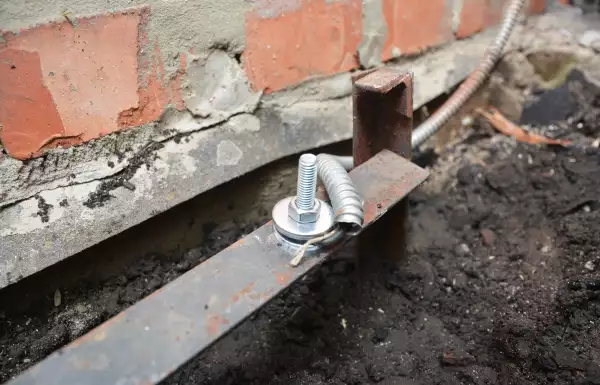 Why Cannot Vertical Earthing Devices Be Installed Close to Each Other?
Why Cannot Vertical Earthing Devices Be Installed Close to Each Other?
 Electrolytic Grounding in Permafrost Soils: Should Vertical of Horizontal Electrodes Be Used?
Electrolytic Grounding in Permafrost Soils: Should Vertical of Horizontal Electrodes Be Used?

